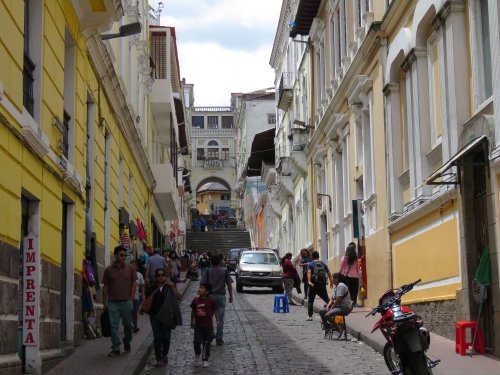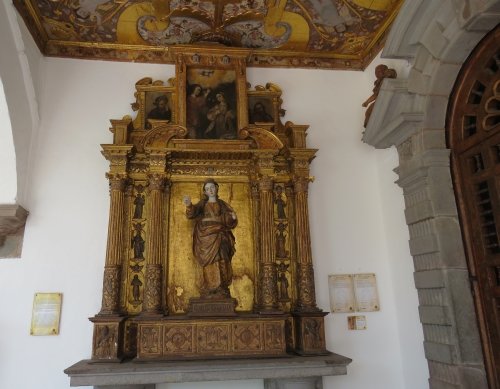Els Slots
WHS #645: Quito
The City of Quito has been on the WH List since its beginnings in 1978. The Ecuadoreans were quick off the mark, with the Galapagos Islands also inscribed that year. From its foundation in 1534, the city always has played an important political, economic and cultural role in northern South America. During its heydays between the 16th and 18th century, numerous churches, convents, colleges and universities were founded. Still, Quito does not have the ring to it of Rio de Janeiro or Buenos Aires and isn’t a tourist magnet in its own right. Most people visit it as an obligatory stop-over on their way to the Galapagos Islands.

Nicknamed ‘Florence of the Americas’, the city is high on religious art and architecture. In the retrospective Statement of Outstanding Universal Value, much emphasis is given to the Quito School of Art. In this fusion style , indigenous artists executed Spanish religious concepts. It resulted in an extreme degree of ornamentation, with bloody displays of wounds, the abundant use of gold leaf paint and the substitution of traditional European natural iconography with local flora and fauna. I started my tour of Quito’s religious buildings at the Cathedral and the Jesuit church, located in the street next to it. Both have in common that they are marketed as “museums”, and thus charge a moderate entry fee and prohibit any photography. They also charge different fees for Ecuadorean citizens and foreigners, unfortunately not an uncommon practice in Ecuador. However they do give you a very nice entrance ticket to keep.
After you’ve entered the Cathedral and the Jesuit Church, you’ll know pretty well what the Quito School of Art entitles: lots and lots of gold-painted wooden decorations with a dramatic painting or sculpture in between. The Jesuit Church La Compañia even advertises itself on a plaque near the entrance as “the highest representation of Baroque architecture in the Americas”. If you want to take pictures of this particular way of decoration, your best bet is the Sagrario Chapel which is adjacent to the Cathedral. Although this isn’t the most exquisite among Quito’s churches, it displays the gilded ornamentation well and the church is free to enter.

The highlight of Quito for me was the San Francisco convent complex. It is huge, covering the whole block of a large square. Sadly this square now is inaccessible and broken up for 80%, because of the construction of the Quito metro system. Works will go on to 2019. Fortunately, the interiors of the monastery and its church and chapels are also very beautiful. The church is slightly lighter in atmosphere than the other churches in the city, and the gold-coloured carvings do not prevail.
Next to the church the former monastery houses a religious museum. They have an abundance of Quito School paintings, sculptures and 4 great altar pieces (see pic 2 above). I enjoyed my rounds through the museum, being almost the only visitor. Although there are quite a lot of tourists in Quito, they apparently do not enter its museums. I had the same experience the day before at the Casa del Alabado, where they show an unmissable collection of pre-Columbian art from Ecuador.

In all, the historic centre of Quito warrants a full-day visit. In addition to the sites described above, the City Museum (housed in a former hospital), the Dominican church (with its Moorish wooden ceilings) and the neogothic Basilica del Voto Nacional (with gargoyles in the form of local animals such as iguana and turtle) are well-worth visiting. Despite its steep streets the center is easily explored on foot. There’s police presence literally on every street corner, which may or may not reassure you. It all seemed quite friendly to me.
More on
Els SlotsComments
No comments yet.
